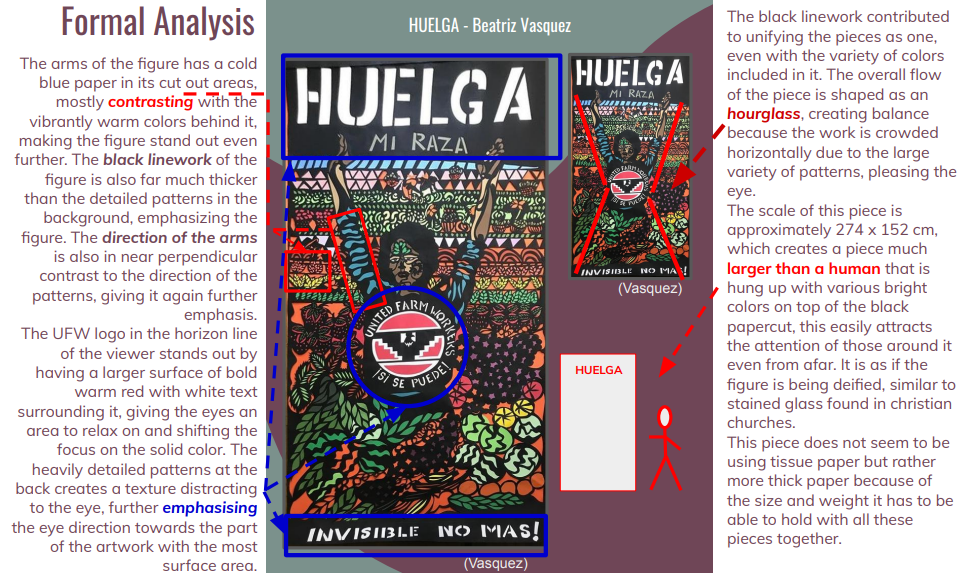These are some tips I learnt from my experience of writing up my comparative study in IB DP visual arts. I strongly think you should take a glance at this because they may help you a lot, but these are ultimately not strict rules you must follow in order to get the best grades.
Table of Contents
1. Pick Three VERY Different Artworks With One Common “Topic” Between Them
What a lot of examiners do not like is that all of the artworks and artists come from similar backgrounds (eg. all western styles). It’s sort of a “hidden criteria” that may not be really known to teachers outside of the examiners. The more diverse the artworks are, the better. But they still need a common ground between them to make sure that they can be compared with each other later on. For example, my “topic” was “papercut in contemporary art”, where I looked at three artworks that individually had modern usages of Mexican, Japanese or Chinese paper cut techniques, which gave me a common ground that I could work with when I had to discuss the similarities and differences.
2. Avoid Famous Artworks/Artists
While I do know people who were very successful analysing well known artworks, I avoided those at all costs. I found it easier to analyse an artwork that the examiner is more likely to have not encountered, simply because they do not have a bias towards its interpretation or will compare it to other better interpretations of it they may have seen from other comparative studies over their career as an examiner. Ultimately, it’s all up to you.
3. Have A Clear Structure
Another “hidden” examiner rule is that they seem to have a very specific structure they want you to follow, which is seen in the criteria sheet and guide.
They want you to have individual slides for each artwork on:
- formal qualities
- function and purpose
- material, conceptual and cultural significance
- comparison slides between all of the artworks, discussing:
- cultural context
- formal qualities
- fuction, purpose
- material, conceptual and cultural significance
(list of sources doesn’t count as a slide for this assessment but keep track of them, you don’t want to fail for “academic dishonesty”)
I also recommend that you add an introduction and conclusion slide. This should summarize the most important bits that you want the examiner to know from your study and should give them an overall better impression.
Hint: Use the exact words from the guide such as “formal qualities” to give your examiner a smaller headache.
Here is a spreadsheet of my checklist that I used for my comparative study as an outline:
4. Make it Visual
It’s a Visual Arts course for a reason. Use arrows and diagrams. Highlight the most important vocabulary. Make it easy for the examiner to see what you want to say instantly. Here is my example:

5. You Are Not Writing Biographies of the Artists!
Some of my classmates had multiple slides on the biography of the artists. That’s not the point of this study. It’s not in the list of stuff they want you to do. Maybe explain it if it is relavant to the concept or cultural aspects of the artwork but leave it out otherwise. Just don’t do it.
6. Interview the Artist(s)
If you get the chance, I highly recommend you to contact the artist directly and ask them questions about the artwork. You’ll get a better understanding of the artwork. Writing out “Interviewing the artist…” or something along those lines in your study also shows the examiner that you added that extra effort to “carry out research from a range of different sources”, which they emphasize in the guide. The more interviews, the better.
7. Follow the Criteria and Subject Report
Every once in a while, the IB releases a subject report for various assignments and subjects. The Visual Arts department released theirs quite recently. It has some pretty important lists of what they want to see and what they do NOT want to see. I recommend taking a look at it. Make sure you look at the criteria sheet as well.
Visual Arts CS Subject Report 2020
Note: make sure you look at the criteria sheet as your main checklist, the report only gives you an additional guideline.
Conclusion
These were the main things I wanted anyone doing the comparative study for Visual Arts to know. If you have questions or more tips, comment them below to share with others!
(If there are any copyright issues with any of the attached files on this article, please contact me individually to have it removed.)
